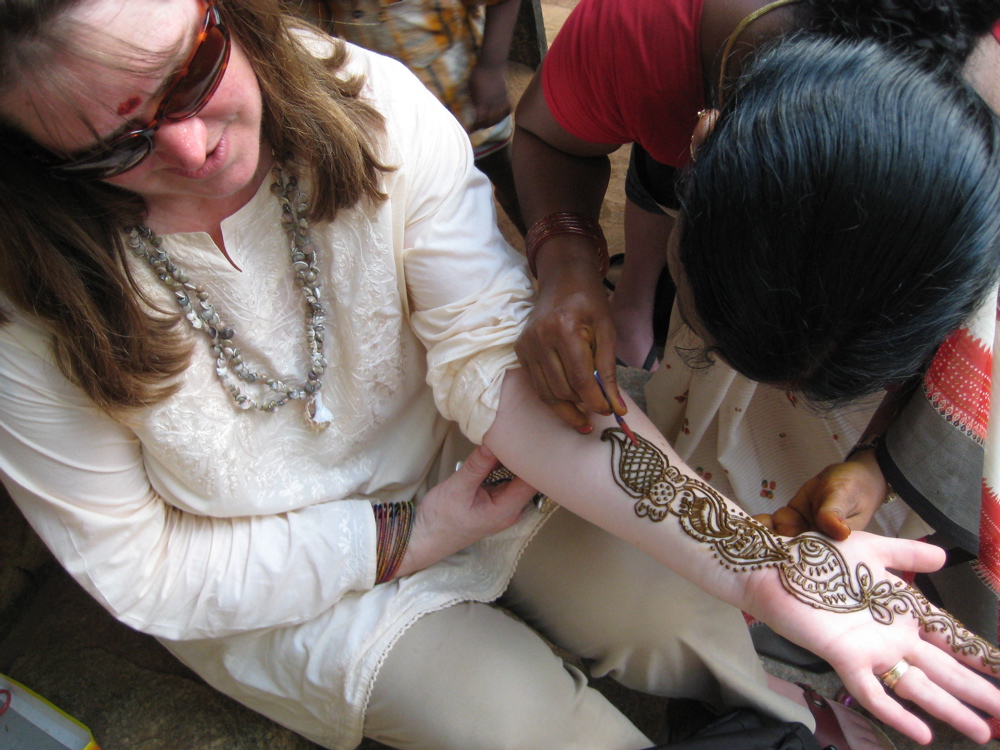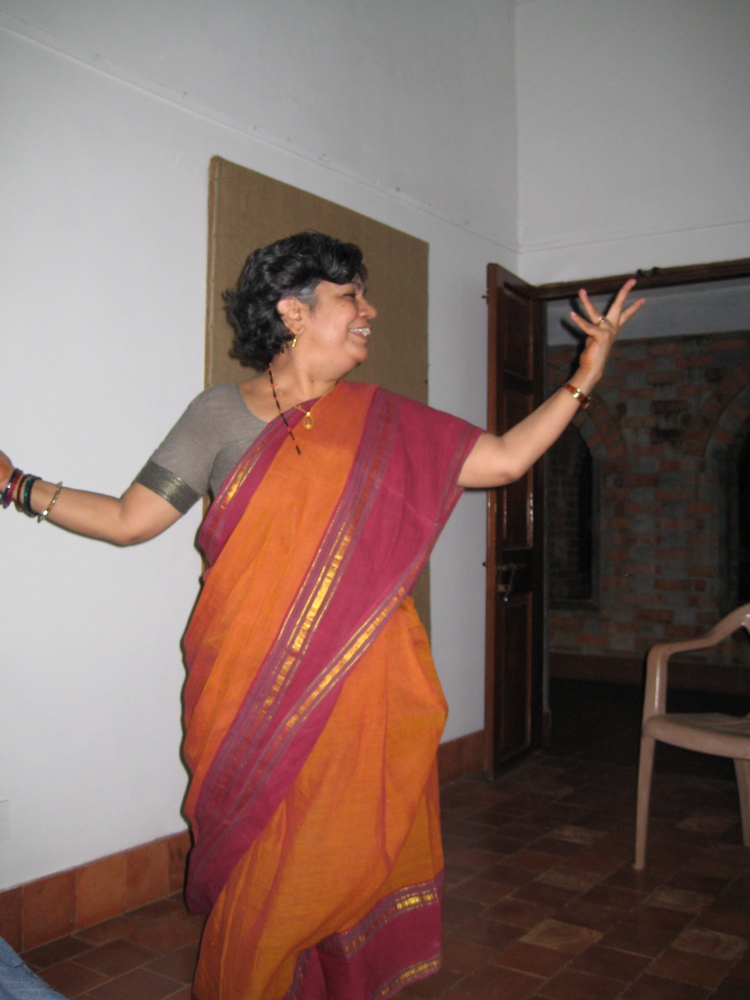Arts in Chennai
sfindley May 25th, 2008
After a brief flight, we arrived in Chennai and noticed a marked difference in landscape and an increase in the heat! As we disembarked from the bus we were greeted with shell necklaces and lime water to wash away the stress of the day. After depositing our luggage, we were quickly swept away to Dakshina Chitra, “a non-profit, community service project of the Madras Craft Foundation for the promotion and preservation of the cultures of the diverse people of India with emphasis on Tamil Nadu, Kerala, Andhra Pradesh, and Karnataka.” (see http://www. dakshinachitra.net)
We were met by V.R. Devika, Managing Trustee of the Aseema Trust, who specilaizes in arts education. Because it was extremely hot we began inside with an overview of the facilities and then we hit the gift shop where we supported the many artisans by purchasing examples of their arts and crafts–some for ourselves and some for family and friends. I received great joy in shopping since the proceeds went to the artists themselves, many of whom are women brought to Dakshina Chitra to learn a craft and become empowered by their ability to provide a financial income for themselves and their families.
After shopping we began our tour. Most of the houses and huts were made from remnants of a variety of homes throughout the region destined for demolition. Classes were designated by the inhabitant’s craft and signified through the materials used to build the home (Bermese teak for the upper class and local wood painted brilliant colors for the weaver’s dwelling). We even managed to meet some of the artists, including a henna painter who decorated all of us women with beautiful drawings.
Most significant here, however, is the preservation of cultural art–everything from wood carvings to woven fabrics demonstrates a joyful celebration of the people and their traditions.
Following our tour, we retreated to a small room where Devika provided a short lecture on Gandhi as performer, as well as a performance of her own. Part cultural historian, part actor, she managed to weave together stories from mythology with the theoretical work she is conducting around Gandhi’s life performance, including the many ways in which he managed to put his life’s work on the world stage, dressing in ritual mourning clothes, and through demonstration (perhaps the Greek mimesis?). Much of her research is grounded in performance theory drawn from the Natyasastra and the 5th Veda, which explores the primary elements of performance (the body/gesture, language, spectacle, and emotions).
Despite the sweltering heat we watched and listened attentively to the description and performance of her closing dance that embraced all of the earth’s creatures through a strong connection to the earth.
As we drove away I was left hoping that we might be able to make further connections with Dakshina Chitra and its offering of Indian cultural artifacts displayed through its strong effort to preserve the many arts and crafts.

